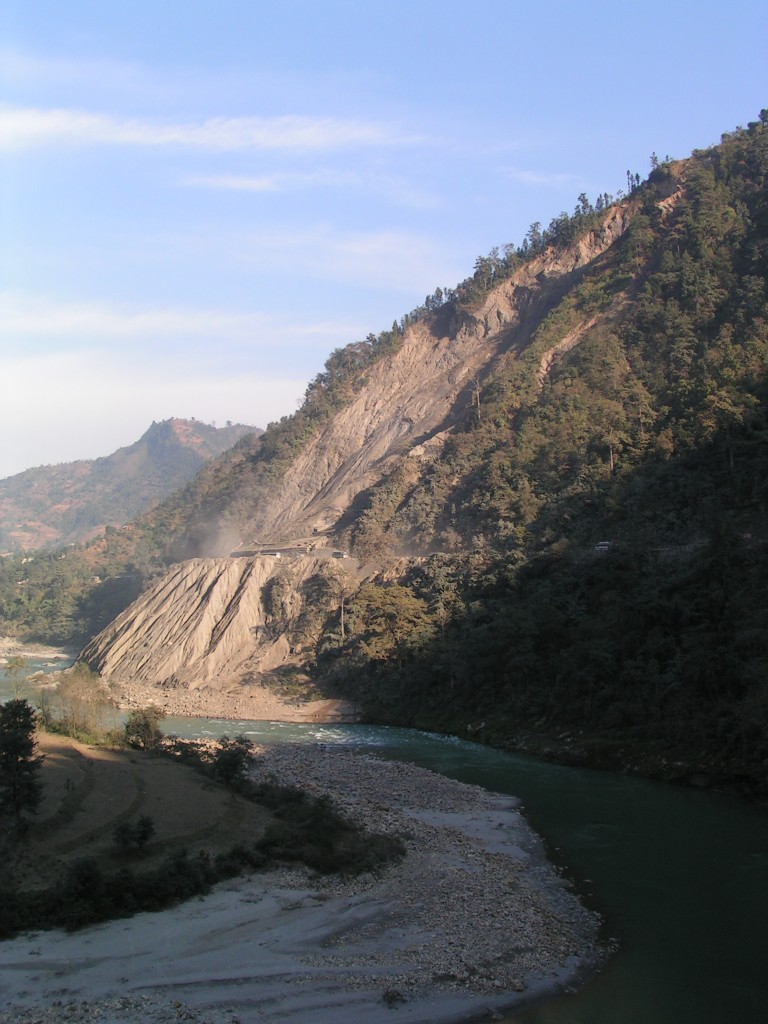28 June 2011
Landslide losses in Nepal
Posted by Dave Petley
For the last decade I have maintained a database of landslides that cause loss of life in Nepal. This work was started as part of a DfID project on landslide risk assessment for rural roads in that country and in Bhutan. As part of that project we tried to extend the database back to 1968, although the older data is less robust, This work is now part of the larger project that I undertake on landslide-induced fatalities, but I retain a particular interest in Nepal because it is both highly landslide prone and subject to rapid changes in both climate and social setting. This data is written up properly in Petley et al. (2006) – this can be downloaded for free from here, with an update in Petley (2009) and a write up of the role of climate on landslide occurrence acoss Asia in Petley (2010).
At the request of a few people, the graph below shows the data for the period 1980 to 2010 inclusive. The solid black line shows the numbers of recorded deaths due to landslides in Nepal for each year for the period 1980 to 2010, whilst the dashed line shows the number of recorded landslides that caused one or more deaths:
The graph also shows one other dataset. This is, in grey, the average monthly precipitation for central Nepal for the period June-August for each year. This is GPCC data, with the dataset running from 1986 to 2010.
There are several things to note here. First, all three datasets show a rising trend with time, though all show considerable inter-annual variability. The last few years have been noticeably worse than this before 2000. The period around 2002 was particularly bad – this is discussed in the paper above. It is interesting to note that average monthly summer precipitation (rainfall) is also apparently increasing in central Nepal. Almost all the annual rainfall in Central Nepal falls in the summer monsoon, which runs June to September in Nepal. There is some obvious correlation between the average monthly summer rainfall and the number of landslides that occur; this is captured in the following regression. Note that I have spilt the data into two periods – 1986 to 1999, when the data are less robust as the database was constructed retrospectively, and 2000 to 2010 when the data are better. Although there is considerable scatter, it is clear that years with more intense rainfall are associated with more landslides.
Of course we are only just starting the 2011 monsoon season; it will be interesting to see how the year develops.
References
Petley, D.N., Hearn, G.J., Hart, A., Rosser, N.J., Dunning, S.A., Oven, K. & Mitchell, W.A. 2007. Trends in landslide occurence in Nepal. Natural Hazards 43 (1): 23-44.
Petley, D.N. 2009. On the impact of urban landslides. Geological Society Engineering Geology Special Publications 22: 83-99.
Petley, D.N. 2010. On the impact of climate change and population growth on the occurrence of landslides in Asia. Quarterly Journal of Engineering Geology and Hydrogeology, 43 (4), 487-96.





 Dave Petley is the Vice-Chancellor of the University of Hull in the United Kingdom. His blog provides commentary and analysis of landslide events occurring worldwide, including the landslides themselves, latest research, and conferences and meetings.
Dave Petley is the Vice-Chancellor of the University of Hull in the United Kingdom. His blog provides commentary and analysis of landslide events occurring worldwide, including the landslides themselves, latest research, and conferences and meetings.
Dear Dave,
Thank you, this is exciting stuff. I never thought I would get excited over landslide data, but there you go. I look forward to reading the papers – thanks for pointing them out.
Best,
Karen
Dear Prof.
It is very exciting information that you have maintaining. It is really very helpfull to us to deal with landslide and otehr potential natural consequences. But the dilemma in this country is non-of-the government authority like to share the information rather they always happy to keep with them or hide. I don’t know how to deal with this issues.
best regards,
Sanjay
Dear Prof. Dev,
I am from Nepal.Thanks for posting landslides losses in Nepal. I am wondering that how you are getting those data , whilst I, as a Nepalese researcher, find it very difficult to have access to acquire those data and have often failed. Anyway many thanks and keep it posted in future too.
Regards,
Narayan
Dear Prof. Dev,
I am from Nepal.Thanks for posting landslides losses in Nepal. I am wondering that how you are getting those data , whilst I, as a Nepalese researcher, find it very difficult to have access to acquire those data and have often failed. Anyway many thanks and keep it posted in future too.
Regards,
Narayan Gurung
[…] the Seti River in Kaski District in Nepal was affected by a catastrophic and very sudden flash flood. The flood affected the villages of […]